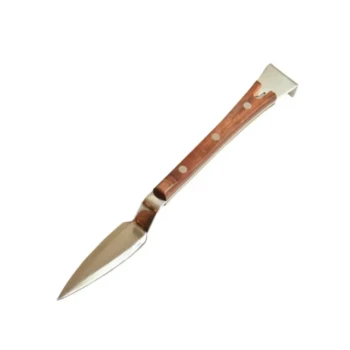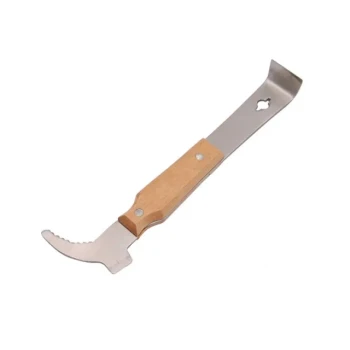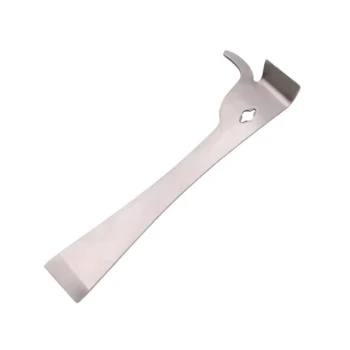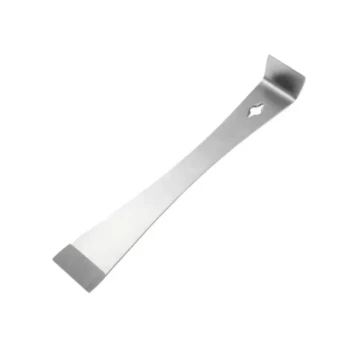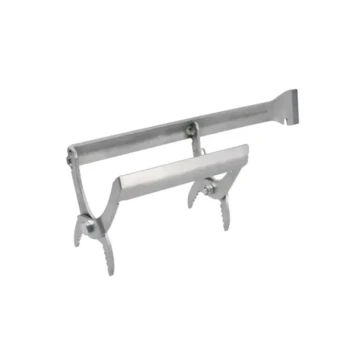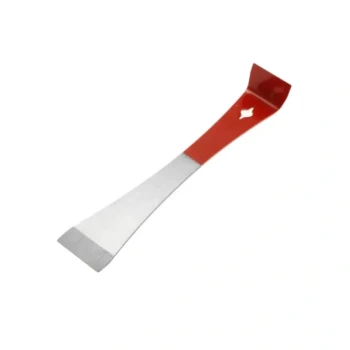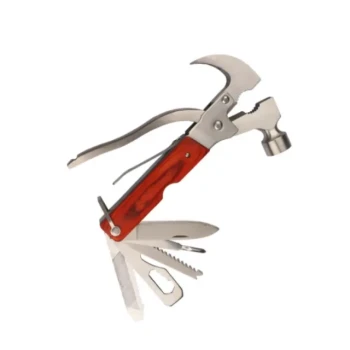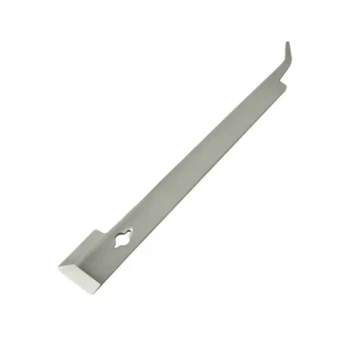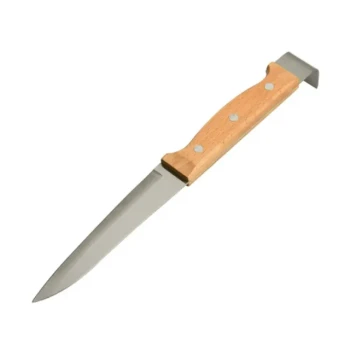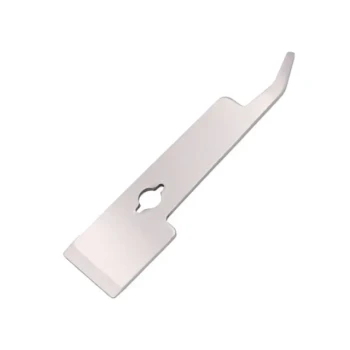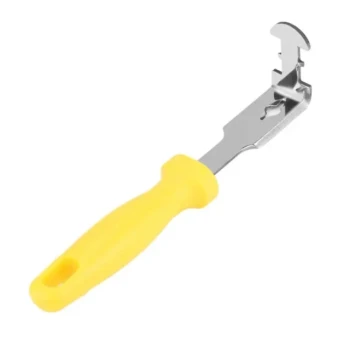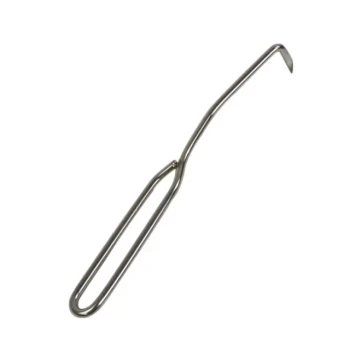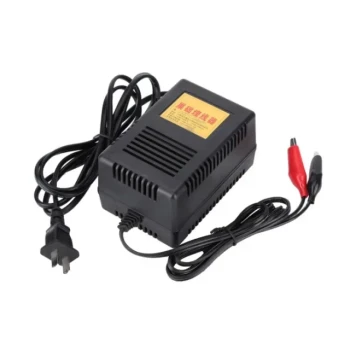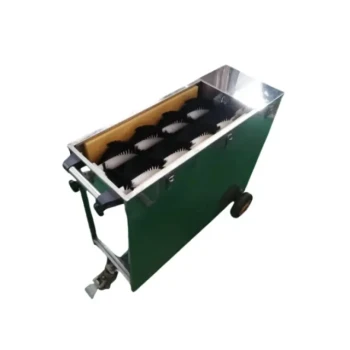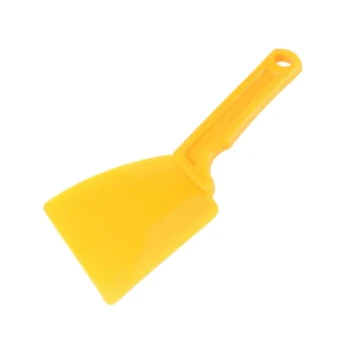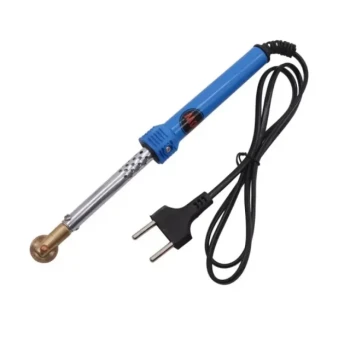At its core, a hive tool is the beekeeper's indispensable key. This simple, handheld metal bar is the primary instrument used to safely open a beehive, pry apart components, and perform essential maintenance. It is arguably the most crucial piece of equipment a beekeeper owns because it directly counters the bees' natural tendency to glue their entire home together.
A beehive is not a set of loosely stacked boxes; it's a fortress sealed with a powerful natural glue called propolis. The hive tool is the one instrument specifically designed to break that seal, allowing for inspection and management without destroying the hive or harming the colony.
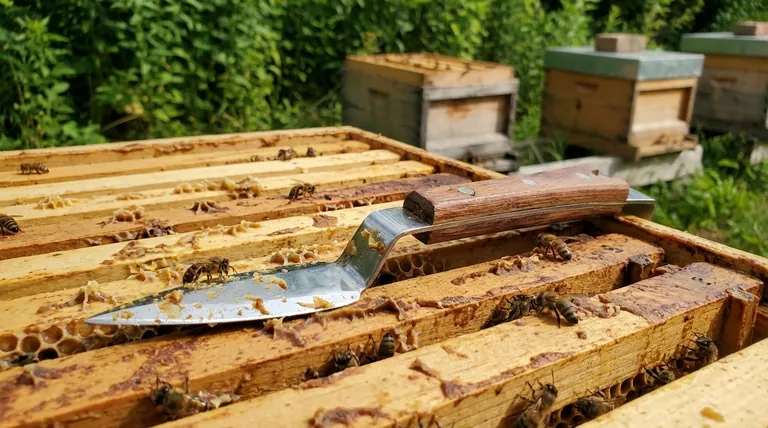
The Problem: Overcoming "Bee Glue"
To understand why a hive tool is non-negotiable, you first have to understand the material that makes it necessary.
What is Propolis?
Honey bees gather resin from trees and plants to create propolis, a sticky, incredibly strong substance often called "bee glue." They use this to seal every crack and seam inside their hive.
This seal serves critical functions for the bees, such as protecting them from the elements, preventing disease, and defending against predators.
The Impact of Brace Comb
In addition to propolis, bees build brace comb (or burr comb), which is extra wax used to connect frames and secure different parts of the hive.
This reinforces the hive's structure, but it also firmly fastens every component together, from the lid down to the bottom board.
The Result: A Locked Fortress
The combination of propolis and brace comb effectively turns a modular beehive into a single, solid unit. Without the right tool, trying to separate hive boxes or lift frames would be nearly impossible and would inevitably cause catastrophic damage to the colony and its structure.
The Hive Tool's Essential Functions
The hive tool is a multi-purpose device, with each end and edge designed for a specific task that makes hive management possible.
Prying and Separating
The primary function of a hive tool is to act as a lever. Its flat, sturdy end is used to pry open the hive lid and separate the hive bodies (boxes), breaking the strong propolis seal with controlled force.
Lifting and Inspecting
Most hive tools have a hooked or bent end (often called a J-hook or L-hook). This feature is designed to hook under the ear of a frame, allowing the beekeeper to gently lift it out for inspection without crushing bees or jarring the rest of the colony.
Scraping and Cleaning
The tool's straight, sharpened edge is a highly effective scraper. Beekeepers use it constantly to remove unwanted brace comb, scrape excess propolis from frames and boxes, and maintain a clean, workable environment within the hive.
Common Pitfalls and Best Practices
While essential, improper use of a hive tool can cause problems. Understanding the risks is key to effective beekeeping.
Avoid Makeshift Substitutes
It can be tempting to use a screwdriver or putty knife in a pinch, but this is a mistake. These tools are not designed for the task; they often bend, break, or damage the wooden hive components, creating more problems than they solve.
The Critical Need for Cleaning
A hive tool is a potential vector for disease. As you move from one hive to another, propolis, wax, and honey residue on your tool can transfer pathogens like American Foulbrood. It is critical to scrape your tool clean between hives and sterilize it if disease is suspected.
Using Force with Finesse
The goal is to be firm but gentle. A hive tool gives you leverage, but it must be used deliberately. Hasty or rough movements can easily crush bees, kill the queen, or damage delicate comb structures, setting the colony back.
Making the Right Choice for Your Goal
How you use your hive tool depends entirely on the task at hand during an inspection.
- If your primary focus is a quick health check: Use the hooked end to gently lift one or two frames from the brood chamber to assess the queen's laying pattern.
- If your primary focus is hive maintenance: Rely on the long, flat edge to scrape down frame rests and hive walls, ensuring components fit together properly.
- If your primary focus is harvesting honey: The prying end is essential for breaking the seal between heavy honey supers before you can remove them.
Ultimately, this simple piece of steel is what transforms a sealed, impenetrable fortress into a manageable and productive colony.
Summary Table:
| Function | Tool Feature Used | Purpose |
|---|---|---|
| Prying & Separating | Flat, Sturdy End | Break the propolis seal to open the hive lid and separate boxes. |
| Lifting & Inspecting | Hooked (J-hook) End | Gently lift frames for inspection without crushing bees. |
| Scraping & Cleaning | Sharpened Straight Edge | Remove brace comb and excess propolis for hive maintenance. |
Ready to equip yourself with the right tools for successful beekeeping?
At HONESTBEE, we supply durable, professional-grade hive tools and beekeeping equipment to commercial apiaries and beekeeping equipment distributors through our wholesale-focused operations. Proper tools are the foundation of effective hive management and colony health.
Contact our team today to discuss your wholesale supply needs and ensure your operation has the essential equipment for success.
Visual Guide
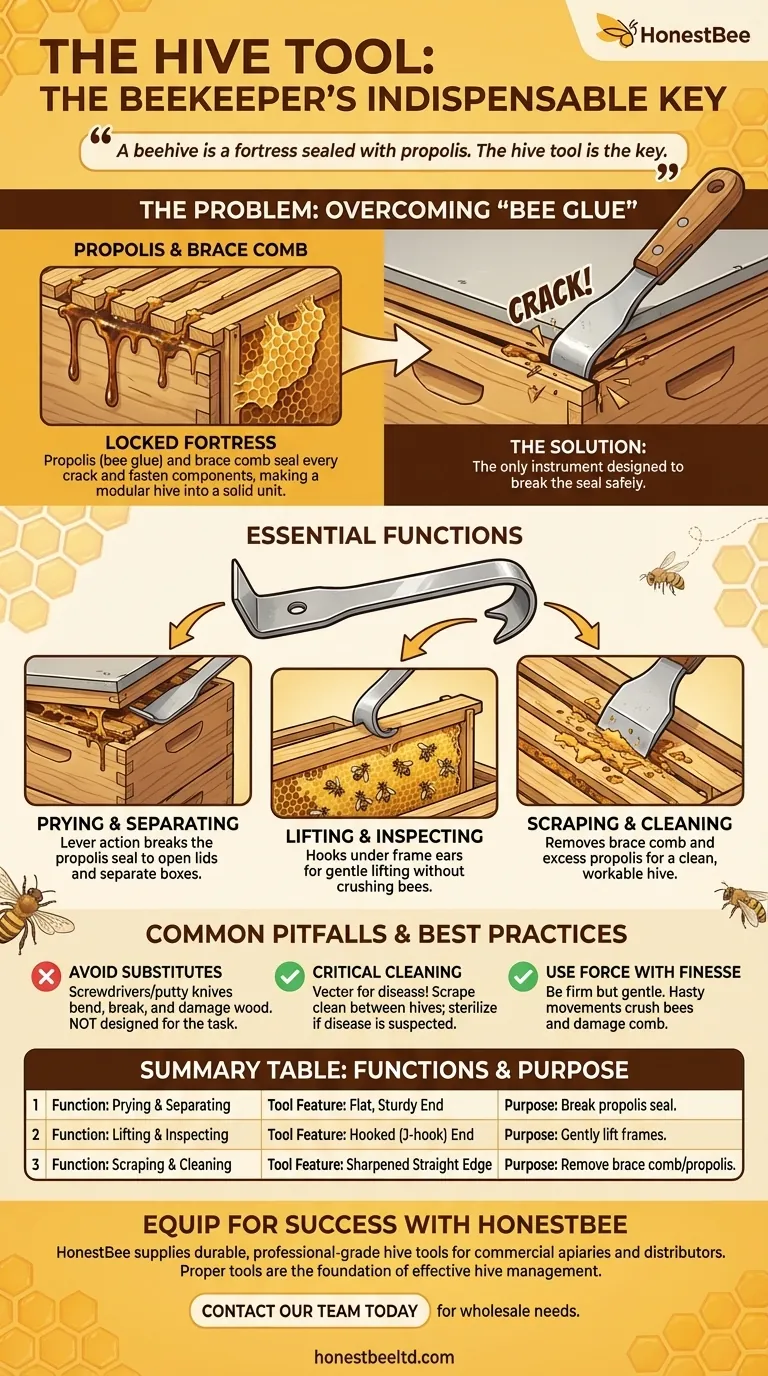
Related Products
- HONESTBEE Premium Italian Style Hive Tool with Hardwood Handle
- HONESTBEE Advanced Ergonomic Stainless Steel Hive Tool for Beekeeping
- HONESTBEE Professional Long Handled Hive Tool with Precision Cutting Blade
- Professional Dual-End Stainless Steel Hive Tool for Beekeeping
- HONESTBEE Professional Multi-Functional Hive Tool with Ergonomic Wood Handle
People Also Ask
- How is a hive tool used for scraping and cleaning? Master Hive Maintenance for a Healthy Colony
- What maintenance steps are recommended for hive tools? Ensure Longevity & Apiary Health
- What are some common uses of a hive tool? Essential Multi-Purpose Tool for Every Beekeeper
- What are the benefits of a multi-functional hive tool? Streamline Your Apiary Workflow with One Tool
- What is the hive tool used for? The Essential Multi-Tool for Every Beekeeper
